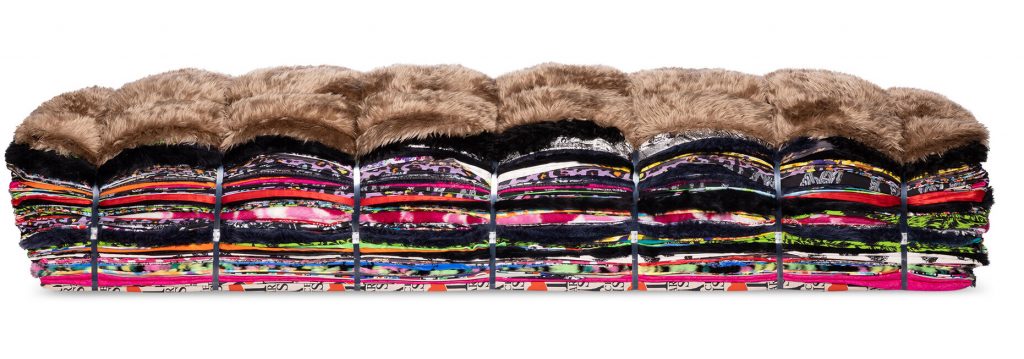Art World
In a First, Balenciaga Offered a $45,000 Bench From Its Flagship Store by Artist Tejo Remy Online—It Immediately Sold Out
In fact, all three sizes of the bench have sold out.

In fact, all three sizes of the bench have sold out.

Meka Boyle

A bench by Dutch designer and artist Tejo Remy, in collaboration with Balenciaga’s creative director Demna, made a surprise appearance on the fashion house’s web store yesterday. Remy reimagined Rag Chair, one of his most iconic designs that he originally created in 1991 with the Dutch design collective Droog. Three versions of the custom bench immediately sold out: large ($45,032), medium ($28,144), and small ($16,767). But good news: the artist can make a new bench by special order.
Remy views the world as his toolkit. His playful, sustainable take on contemporary design and architecture incorporates old materials with new ideas. For the Balenciaga collaboration, Remy’s benches are made entirely out of leftover Balenciaga fabric, a combination of cotton, polyamide, polyester, silk, and viscose scraps tied to a wood foundation, and produced through Remy’s Social Workshop, a program he started to give opportunities to people looking to rejoin the workforce.

Tejo Remy’s bench for Balenciaga, layered with unused fabric. Courtesy of Balenciaga.
Upon first glance, the largest bench, which appears to be topped with a layer of faux fur, looks like an oversized avant-garde designer sandwich or mattress piled with clothes.
The benches were sold as part of Balenciaga’s Objects line alongside a pink furry heart-shaped dog bed and blanket for $1,352, a sold out white porcelain sculpture of the Runner sneaker for $6,751, a check-pattern ceramic shopper bag vase for $6,751, along with a variety of everyday objects like tape, tea cups, and soap with the Balenciaga logo.
Remy’s benches were exhibited globally at select Balenciaga flagship stores before they became available for sale online. This is the first time Balenciaga has sold an art piece online that was first displayed in its flagship stores since it launched its Art In Stores series. Past collaborators include Berlin-based artist Anna Uddenberg and British artist Rosie McGinn, who both created playful sculptures in lieu of mannequins in store windows.
“Making the benches with Balenciaga’s obsolete materials is a comment on the fashion industry that makes the amount of waste visible,” said Remy. He noted that the fabric used would normally be burned. Recently, he has been approached by more fashion brands interested in turning their excess fabric into chairs. “When I conceived the Rag Chair, it was already a comment on waste,” he said. “Now fashion brands are seeing their waste, which is a starting point for the process of change.”
Remy never makes the same piece twice. He has revisited the design throughout his career and offers a made-to-order version where individuals can send him their discarded clothes, which he turns into custom chairs. An early version of the Rag Chair is in the Philadelphia Museum of Art’s permanent collection and his ‘You Can’t Lay Down Your Memory’ Chest of Drawers (1991), made from found drawers tied together, is in MoMA’s permanent collection.